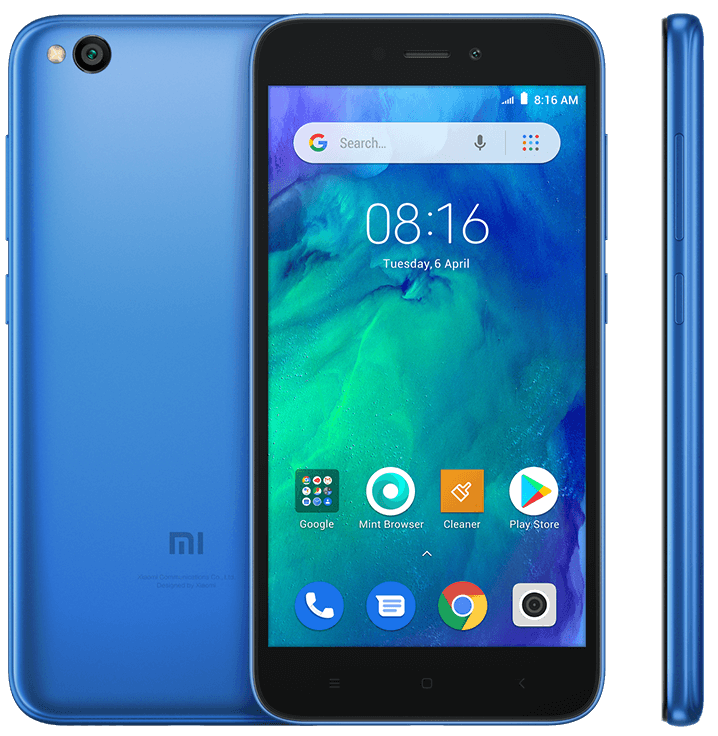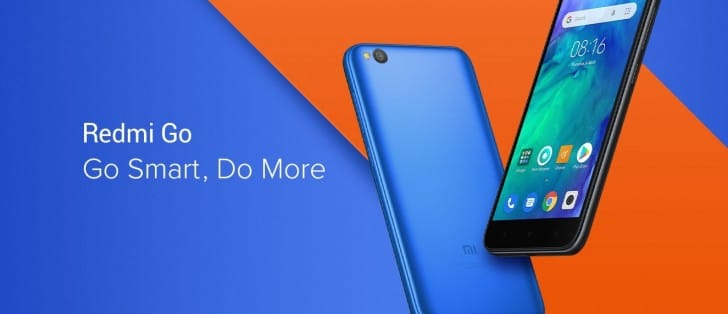Redmi Go Review: Affordable and Compact Smartphone for Everyday Essentials
Discover the Redmi Go’s compact design, smooth Android Go performance, and basic smartphone features. Ideal for first-time users and budget-conscious buyers.

1. Introduction
The Redmi Go by Xiaomi is a budget-focused smartphone introduced in early 2019, designed as an accessible entry point into the Android ecosystem for first-time smartphone users or those seeking a simple, low-cost device. It balances essential smartphone features with affordability, making it ideal for emerging markets, secondary device users, or anyone prioritizing basic communication, social media, and light app use. Running Android 8.1 Oreo Go edition, Redmi Go offers a streamlined operating system optimized for devices with limited hardware, enhancing usability and responsiveness despite modest internals. For users looking for a functional smartphone without premium features or high prices, the Redmi Go stands out. To understand how it competes with other budget devices, you can explore Xiaomi’s official Redmi series page for more options.
Redmi Go Key Features Table
| Feature | Specification |
|---|---|
| Display | 5.0" IPS LCD, 720 x 1280 pixels, 16:9 aspect ratio |
| Processor | Qualcomm Snapdragon 425, Quad-core 1.4 GHz |
| RAM | 1GB |
| Storage | 8GB or 16GB, expandable up to 128GB via microSD |
| Rear Camera | 8MP, f/2.0, LED flash |
| Front Camera | 5MP, f/2.2 |
| Operating System | Android 8.1 Oreo (Go edition) |
| Battery | 3000 mAh, non-removable |
| Connectivity | 4G LTE, Wi-Fi 802.11 b/g/n, Bluetooth 4.1 |
| Ports | microUSB 2.0, 3.5mm headphone jack |
| Dimensions & Weight | 140.4 x 70.1 x 8.4 mm, 137g |
| Colors | Black, Blue |
2. Design & Build Quality
The Redmi Go sports a straightforward yet practical design featuring a 5.0-inch IPS LCD screen with a 720 x 1280 HD resolution and a classic 16:9 aspect ratio. Its compact form factor (140.4 x 70.1 x 8.4 mm) and featherlight weight (137g) guarantee comfortable single-handed use, a boon for users new to smartphones or preferring smaller devices. The plastic frame and back offer durability for daily use, while the glass front protects the display. Colors like Black and Blue provide simple aesthetics without flashy accents. Although the screen bears thicker bezels than pricier phones, this helps keep the Redmi Go’s price low without compromising essential functionality. Dual nano SIM slots combined with a dedicated microSD slot enable flexible usage for multitasking communication and storage expansion. Visit Xiaomi’s Redmi Go product page for official photos and detailed design views.

3. Display
The Redmi Go’s 5-inch IPS LCD display delivers clear visuals for everyday smartphone activities. While the resolution of 720 x 1280 pixels doesn’t compete with mid-range or flagship phones, it’s well-suited for casual browsing, messaging apps, and watching videos on the go. The 16:9 aspect ratio is reminiscent of older smartphone models, giving a traditional look with slightly larger bezels around the screen. Brightness is adequate for most indoor environments, and the IPS panel offers decent viewing angles to maintain color integrity when viewed from different positions. If you are used to larger, high-definition smartphones, the Redmi Go’s screen may seem modest, but for its price and purpose, it provides a functional and comfortable user experience.
4. Performance
At its core, the Redmi Go runs on the Qualcomm Snapdragon 425 processor alongside 1GB of RAM, making it an entry-level configuration optimized through the Android Go edition of Oreo. This combination ensures basic animations, app launches, and day-to-day tasks like calls, SMS, and social media use occur without significant lag. The Android Go OS is tailored for devices with limited RAM and storage by using optimized Go apps such as YouTube Go and Maps Go, ensuring they run smoothly where full versions may struggle. However, users should temper expectations around multitasking heavy apps or playing demanding graphics-intensive games, which may result in slowdowns. The Snapdragon 425 is built for reliable efficiency, and paired with lightweight software, it stands as a capable performer in its category.
5. Cameras
The Redmi Go is equipped with an 8MP rear camera that offers acceptable image quality under good lighting conditions. Photos exhibit reasonable detail and natural colors for casual picture-taking but can get grainy or lose sharpness in low-light environments. The camera app is straightforward, ideal for users unfamiliar with advanced photography settings. The LED flash aids in dim scenarios but produces limited correction compared to higher-end devices. For selfies and video calls, the 5MP front camera is adequate, capturing decent shots and supporting basic video conferencing needs. While the Redmi Go’s camera system won’t satisfy enthusiasts, it fulfills the needs of those wanting functional photography without frills.
6. Battery Life
The Redmi Go carries a 3000mAh non-removable battery that supports a full day of moderate use, including calls, web browsing, and social media. Thanks to the power-efficient Snapdragon 425 chipset and Android Go’s frugal software footprint, the device can often deliver impressive battery endurance, with users reporting up to 10 days of standby time under light usage. Charging is facilitated via a microUSB 2.0 port with a standard 5V/1A charger, which takes roughly 90 minutes to reach full capacity. While it lacks fast charging technologies found in pricier phones, overall battery performance aligns well with its budget status, providing dependable all-day stamina.
7. Connectivity & Other Features
Connectivity options on the Redmi Go cover the essentials for smooth communication. It supports 4G LTE for modern mobile data speeds, Wi-Fi 802.11 b/g/n for wireless internet, Bluetooth 4.1 for peripheral connections, and GPS for location services. A 3.5mm headphone jack remains, an advantage for users preferring wired audio devices. The device also supports dual SIM functionality with two physical nano SIM slots, plus includes a dedicated microSD card slot for easy storage expansion up to 128GB without sacrificing SIM capability. While it lacks advanced features such as NFC or a fingerprint sensor, Redmi Go’s connectivity coverage and physical ports make it a pragmatic choice in its segment. Xiaomi’s support resources provide additional detail.
8. User Experience
The Redmi Go’s Android 8.1 Oreo Go edition offers a near-stock Android interface with optimizations for low specs. The lightweight OS ensures responsiveness by limiting background activity and using ‘Go’ versions of popular apps to reduce memory usage. The Mint Launcher organizes applications in a user-friendly app drawer with a search bar, improving discoverability. While limited RAM can restrict intensive multitasking, the simplicity of the UI enhances usability for first-time smartphone buyers or those wanting an easy-to-use device. The inclusion of Google Assistant Go also supports regional language commands, particularly popular in Indian markets. Overall, the Redmi Go provides a smooth, uncomplicated user experience consistent with its budget nature.
9. Pros and Cons
| Pros | Cons |
|---|---|
| Affordable price point | Limited 1GB RAM may restrict multitasking |
| Compact and lightweight design | Low storage (8GB/16GB) needs microSD expansion |
| Efficient Snapdragon 425 processor | Basic 720p display with wider bezels |
| Android Go OS optimized for low specs | No fingerprint scanner or NFC |
| Dual SIM and dedicated microSD slot | Average cameras with limited low-light performance |
10. Comparison
When compared to other budget smartphones like the Nokia 1, Samsung Galaxy A01, or various entry-level Motorola devices, the Redmi Go excels in delivering a clean Android Go experience with good build quality. However, competitors may offer slightly larger screens or newer Android versions. Devices such as the Motorola Moto E series or realme C-series might offer higher RAM or more recent Android versions but at a slightly higher price point. Xiaomi’s Redmi Go remains a strong contender in ultra-budget segments, especially for users prioritizing simplicity and cost. See Xiaomi’s Redmi models comparison page for broader options.
11. Pricing, Variants & Availability
Launched globally at a price around $70-$90 depending on storage and region, the Redmi Go remains one of the most affordable Android smartphones available. Variants typically include 8GB or 16GB internal storage paired with 1GB RAM. It is widely available through online retailers, local mobile shops, and Xiaomi’s official channels, especially in emerging markets. Ongoing offers and trade-ins can reduce upfront costs further. For current pricing and variants, refer to Xiaomi’s official store.
12. Verdict / Conclusion
The Redmi Go is an excellent choice for users seeking an entry-level smartphone that covers the basics in a compact, user-friendly package. Its affordable price, combined with a manageable display size, dual SIM capability, and Android Go optimizations, make it perfect for first-time smartphone users, seniors, or secondary-device buyers. While it won’t satisfy heavy multitaskers or camera enthusiasts, the Redmi Go delivers solid, dependable performance for everyday communication and light usage, embodying great value and simplicity in the budget segment.
Frequently Asked Questions (FAQ)
Q1: Is the Redmi Go still relevant in 2025?
While it’s an older device, the Redmi Go remains relevant for users seeking a no-frills smartphone for calls, texts, and light app use. However, newer budget phones with updated software and more RAM are recommended for better longevity and performance.
Q2: How well does the Redmi Go perform with only 1GB RAM?
Thanks to Android Go optimizations, 1GB RAM is sufficient for basic usage like messaging and social media. However, multitasking and running heavy apps may be slow or limited.
Q3: Does Redmi Go support dual SIM and expandable storage?
Yes, it has dual nano SIM slots plus a dedicated microSD card slot for up to 128GB additional storage, allowing users to balance calls and data plus increase media storage affordably.
Q4: Can I update the Redmi Go to a newer version of Android?
The Redmi Go launched with Android 8.1 Oreo Go edition, and Xiaomi’s update support for this device has typically been limited. Users should not expect major software upgrades beyond security patches.
Q5: How good is the camera on the Redmi Go?
The 8MP rear camera and 5MP front camera capture decent photos in good lighting but lack advanced features and struggle in low-light. It’s suitable for casual photography and video calls but not for photography enthusiasts.




